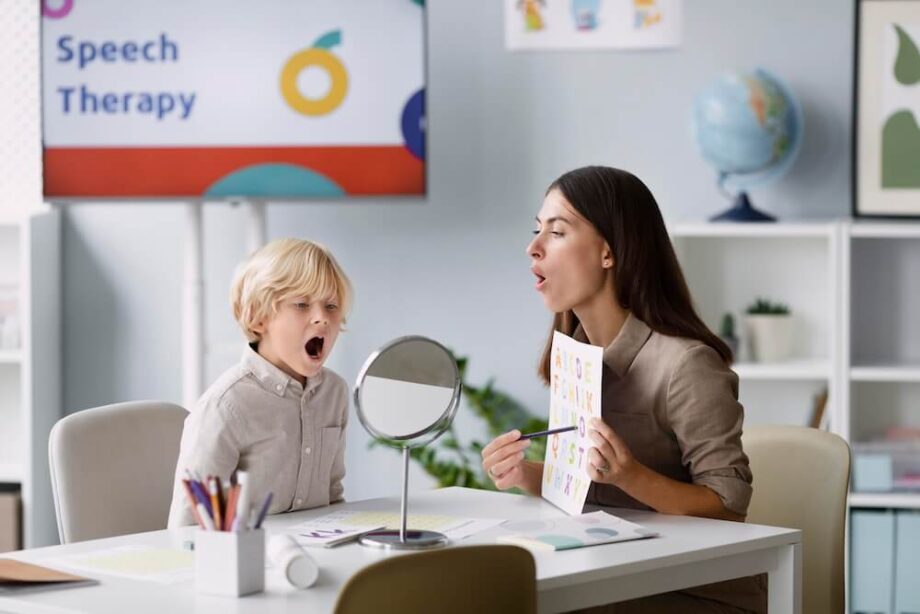As a speech-language therapist with a passion for early intervention, one of the most misunderstood and often misdiagnosed motor speech disorders I encounter is Childhood Apraxia of Speech (CAS). Parents often come to me with questions like:
- “Why can my child say a word perfectly once, but not again?”
- “Why does my child understand everything but struggles to speak?”
- “Why aren’t speech therapy strategies working like they did with other kids?”
These are valid concerns, and they often point to apraxia. Let’s break it down so you can better understand what CAS is, what it looks like, and how you can support your child through the journey.
What Is Childhood Apraxia of Speech (CAS)?
Childhood Apraxia of Speech (CAS) is a motor planning disorder. That means the issue isn’t with the muscles themselves (like the tongue or lips), but with how the brain plans and sends the messages to move those muscles to produce speech. Children with CAS know what they want to say, but their brain has difficulty coordinating the complex movements required for speech.
It’s important to note: CAS is not caused by muscle weakness or paralysis it’s about the brain’s ability to plan movement sequences for speech.

Key Characteristics of CAS
While every child is unique, here are some hallmark signs that may indicate apraxia:
- Inconsistent speech errors: A child might say a word correctly one time and incorrectly the next.
- Groping movements: Visible struggle or searching movements of the mouth when trying to speak.
- Limited sound repertoire: Fewer consonants and vowels than typical for their age.
- Difficulty with longer words or phrases: The more complex the word, the harder it is to produce.
- Intelligibility issues: Speech may be very hard to understand, especially for unfamiliar listeners.
- Unusual prosody: Speech may sound choppy, monotone, or have abnormal rhythm or stress.
Keep in mind that not every child with speech delays has apraxia. CAS is relatively rare affecting 1-2 children per 1,000 and should be diagnosed by a qualified SLP with experience in motor speech disorders.
How Is CAS Diagnosed?
Diagnosing CAS isn’t always straightforward. It’s based on clinical observation, speech tasks, and ruling out other conditions like phonological disorders or dysarthria. At our clinic, we use a variety of tools and speech tasks (like repetition, increasing word length, and sequencing sounds) to analyze motor planning skills.
A true diagnosis often takes multiple sessions and collaboration with parents and other professionals (like occupational therapists or neurologists, if needed).
CAS Treatment
The good news? With the right therapy, children with CAS can make significant progress. But treatment is often intensive, frequent, and specific. Here are some evidence backed approaches:
- Motor-based therapy: Like Dynamic Temporal and Tactile Cueing (DTTC), which uses a cueing hierarchy and lots of practice.
- Frequent, repetitive practice: Think drill-based but fun targeting specific word shapes and motor patterns.
- Multi-sensory input: Visual, tactile, and auditory cues help guide correct sound production.
- Augmentative and Alternative Communication (AAC): In severe cases, we may introduce AAC (like picture boards or speech-generating devices) to help reduce frustration and build communication while speech improves.
Parental Involvement Is Key
Home practice, even just 5–10 minutes a day, can make or break progress. As therapists, we coach parents on how to model speech, use cueing strategies, and encourage verbal attempts throughout daily routines.
Childhood Apraxia of Speech Prognosis
There’s no one-size-fits-all answer. Some children respond quickly to therapy; others may need years of support. Early diagnosis and intensive, specialized therapy significantly improve outcomes.
Many children with CAS go on to develop clear, functional speech especially with a strong support team behind them.
Final Thoughts
If your child struggles with speech and you suspect something more than a “typical delay,” trust your gut. CAS is challenging, but it’s not insurmountable. With proper diagnosis, skilled therapy, and unwavering family support, children with apraxia can and do find their voice.
You’re not alone in this – at Power Learning, we understand that supporting a child with Childhood Apraxia of Speech requires more than just speech therapy; it takes a team. That’s why we offer a multidisciplinary approach, bringing together experienced speech-language pathologists, occupational therapists, special educators, and other professionals who collaborate to create personalized, holistic treatment plans.
Our goal is to support not just speech, but your child’s overall communication, confidence, and learning. We combine evidence-based techniques with a child-friendly, play-based environment, making therapy both effective and enjoyable.
If you’re looking for answers, guidance, or just someone to listen to, we’re here. Let’s work together to help your child find their voice – book your free appointment. We have two state of the art learning and therapy centers at Juhu and Goregaon in Mumbai.

